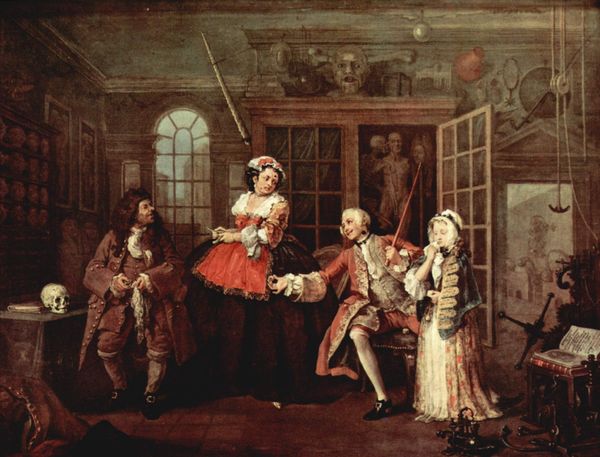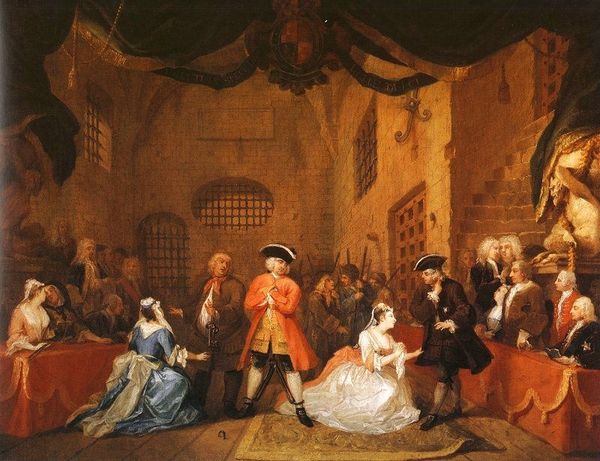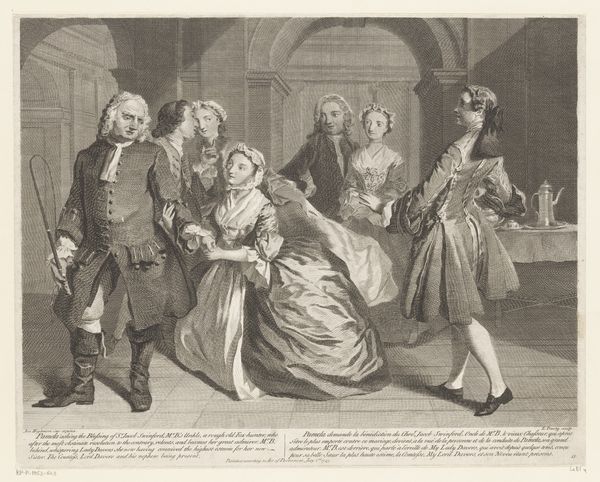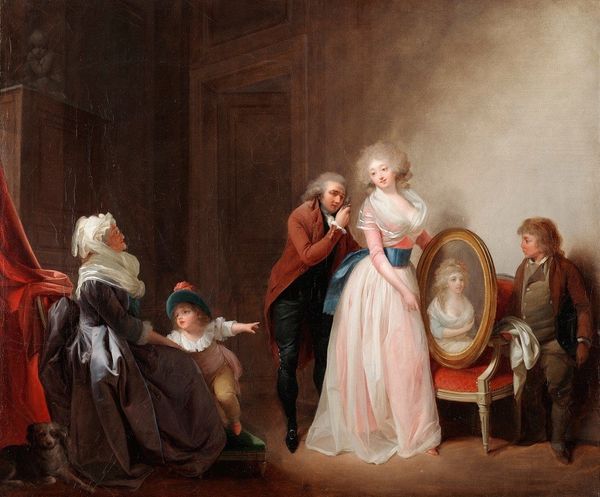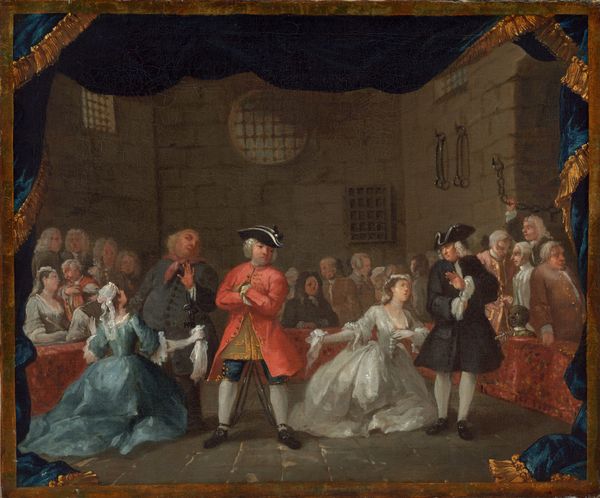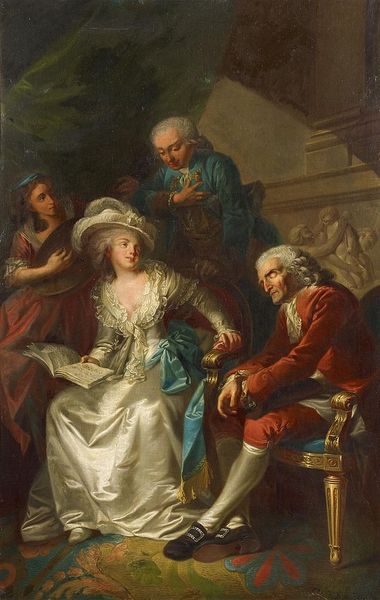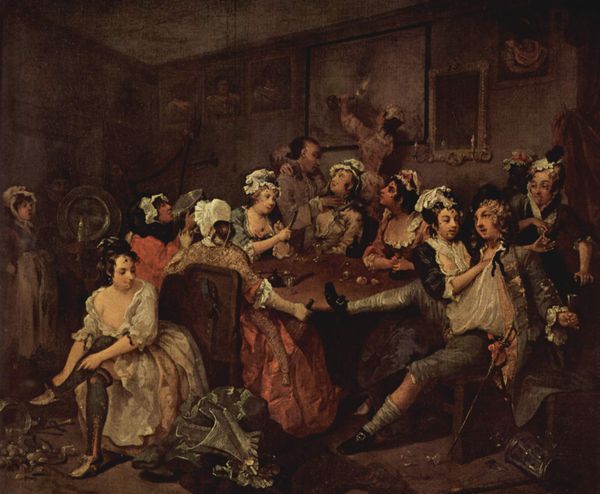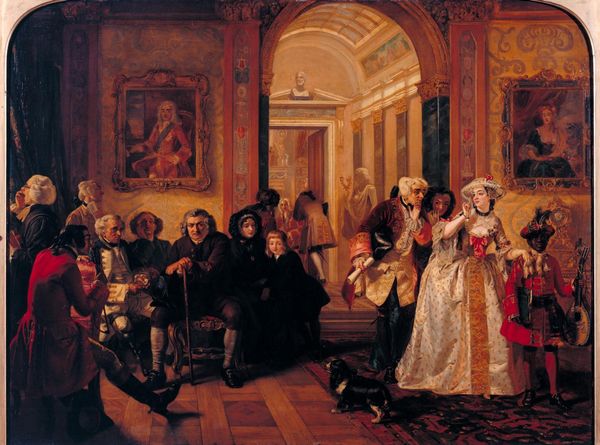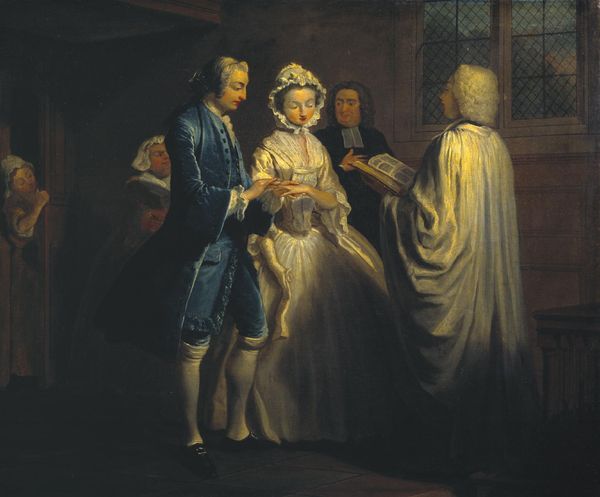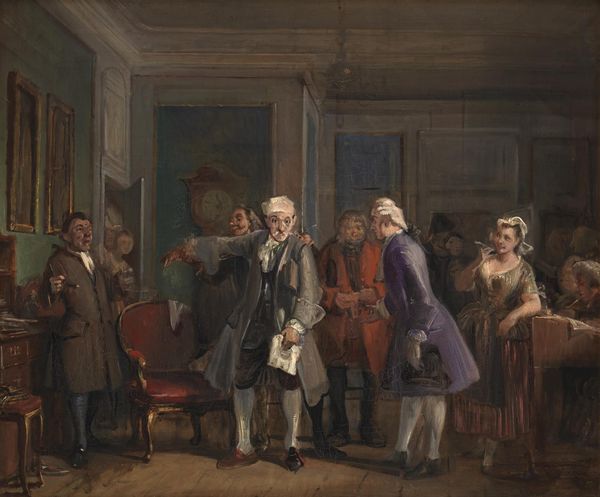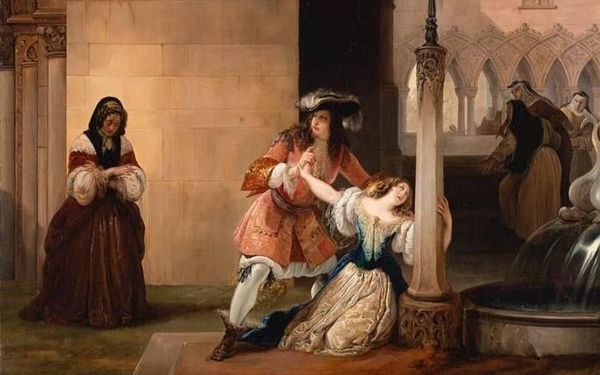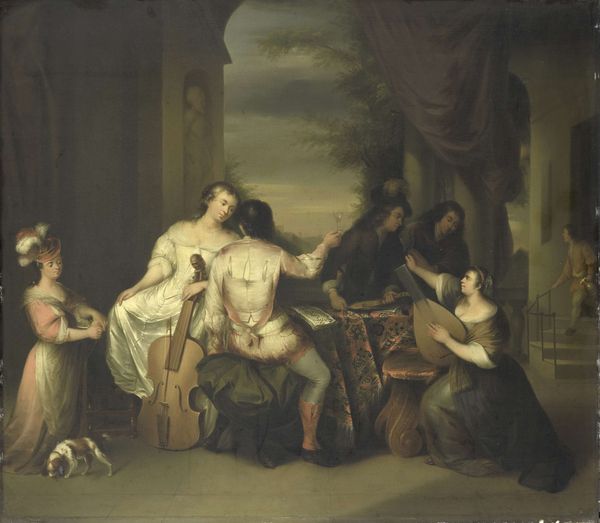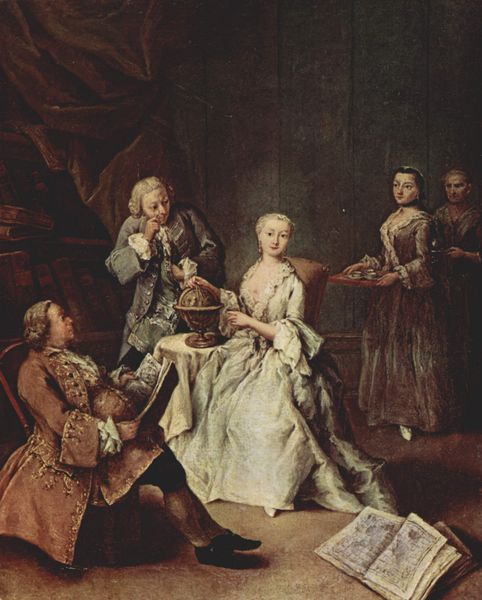
Dimensions: support: 632 x 750 mm frame: 820 x 955 x 115 mm
Copyright: CC-BY-NC-ND 4.0 DEED, Photo: Tate
Curator: Joseph Highmore painted this piece, titled "XI: Pamela Asks Sir Jacob Swinford’s Blessing," during the eighteenth century. Editor: The canvas feels thick with paint, and I'm immediately drawn to the narrative—a clear power dynamic at play. Curator: Precisely. Note the sharp diagonals formed by the figures' stances, creating a sense of movement and tension. The artist's composition is highly theatrical. Editor: And the costuming! Consider the textures of the fabrics; the labor involved in its creation. It's an index of the social hierarchy of the time. Curator: True, but observe also how Highmore uses light to highlight Pamela’s demure pose against the darker, more imposing figure of Sir Jacob, a classic representation of virtue confronting authority. Editor: I see that, but I can't help but wonder about the human hands that wove the fabrics, stitched the seams, and produced the very pigments that brought this drama to life. Curator: Fair point. Ultimately, it's a fascinating study of social convention and pictorial form. Editor: Indeed, understanding the material conditions illuminates the drama depicted in the painting.
Comments
tate 6 months ago
⋮
http://www.tate.org.uk/art/artworks/highmore-xi-pamela-asks-sir-jacob-swinfords-blessing-n03576
Join the conversation
Join millions of artists and users on Artera today and experience the ultimate creative platform.
tate 6 months ago
⋮
This scene represents Pamela’s great triumph in the second part of the novel. Although her personal qualities gradually win her the acceptance of all her snobbish new relations, her husband’s rich uncle Sir Jacob remains implacably opposed to the marriage. When he finally does meet Pamela, he mistakes her for the daughter of an earl. On discovering his mistake, his prejudices against her finally crumble and he is persuaded to give his blessing to the fait accompli of his nephew’s unequal marriage. Gallery label, February 2016
